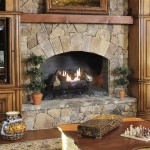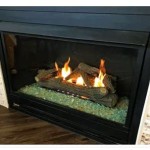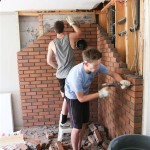The Cost of a Stacked Stone Fireplace: A Comprehensive Guide
A stacked stone fireplace is a beautiful and timeless addition to any home. It adds warmth, ambiance, and character to a living space, making it a popular choice for homeowners looking to enhance their interior design. However, before committing to this project, it's crucial to understand the cost implications. This article will provide a comprehensive overview of the factors that influence the cost of a stacked stone fireplace, helping you budget effectively for this home improvement.
1. Stone Material and Style
The type of stone you choose plays a significant role in determining the overall cost. Popular options for stacked stone fireplaces include:
- Natural Stone: This includes options like granite, marble, limestone, and slate. Natural stone is often more expensive than manufactured alternatives due to its unique characteristics and quarrying processes. For instance, granite is known for its durability and high heat tolerance, while marble adds elegance and sophistication. However, the price of natural stone can vary considerably depending on availability, rarity, and origin.
- Manufactured Stone: These products are made from concrete or other materials to mimic the look of natural stone. They are generally more affordable than natural stone, making them a popular choice for budget-conscious homeowners. Manufactured stone offers a wide array of styles, colors, and textures, allowing for versatility in design.
- Cultured Stone: This is a specific type of manufactured stone that is designed to resemble thin slices of natural stone. Cultured stone is often lighter and easier to install than natural stone, making it a suitable option for DIY projects. Its affordability and versatility make it a popular choice for homeowners seeking an elegant and affordable alternative.
The style of stacked stone you choose also influences the cost. A simple, linear design generally costs less than a complex, intricate pattern. The size and thickness of the stone pieces will also affect the price. Larger, thicker stones are typically more expensive than smaller, thin ones.
2. Fireplace Installation and Labor Costs
The cost of installing a stacked stone fireplace can vary significantly depending on the complexity of the project and the labor rates in your area. Here are some factors that influence these costs:
- Existing Fireplace: If you already have an existing fireplace, the installation process will be simpler and less expensive. The contractor will mainly focus on replacing the existing facing with stacked stone.
- New Fireplace Construction: Building a new fireplace from scratch requires additional construction work, including framing, firebox installation, and chimney construction. This significantly increases the overall cost, as it involves more complex and time-consuming labor.
- Access and Location: The location of the fireplace can affect the cost. If it is easily accessible, the installation process will be simpler and faster. On the other hand, if the fireplace is located in a hard-to-reach spot, the installation might require specialized tools and techniques, increasing the labor cost.
- Fireplace Type: The type of fireplace you choose also impacts the installation cost. Wood-burning fireplaces require a dedicated chimney and additional safety considerations, which can increase the overall cost. Gas fireplaces, on the other hand, are typically easier to install and often require less extensive construction.
3. Additional Costs and Considerations
Besides the stone material and installation costs, there are other factors that can influence the overall budget for a stacked stone fireplace:
- Fireplace Surround and Mantle: The inclusion of a decorative surround and mantle can add to the cost of the project. These elements can be made from wood, metal, or stone, and their design and complexity affect the price.
- Fireplace Insert: If you choose a gas or electric fireplace insert, you will have an additional cost associated with the insert itself. This cost varies widely depending on the brand, model, and features of the insert.
- Permits and Inspections: Depending on your local building codes and regulations, you may require permits and inspections for the construction of your fireplace. These fees should be factored into your budget.
- Design and Planning: Hiring a professional designer or architect to create a custom design for your stacked stone fireplace can add to the overall cost. However, this can also help ensure a fireplace that meets your specific needs and aesthetic preferences.
It's essential to obtain multiple quotes from reputable contractors and gather information on the cost of materials and labor in your area. This will enable you to compare prices and make informed decisions that best suit your budget and project requirements.

12 Stacked Stone Fireplace Ideas For Optimal Coziness

17 Modern Stacked Stone Fireplace Ideas For Your Home

Natural Stacked Stone Veneer Fireplace Ideas

12 Stacked Stone Fireplace Ideas For Optimal Coziness

Hirondelle Rustique Diy Stacked Stone Fireplace First Remodeling Project Part 2

17 Modern Stacked Stone Fireplace Ideas For Your Home

Stone Veneer Stack Rustic Mountain View

Natural Stacked Stone Veneer Fireplace Ideas

Thin Stone Veneers Make A Fireplace Update Easy Swenson Granite 100 Natural Stones

12 Stacked Stone Fireplace Ideas For Optimal Coziness
Related Posts








